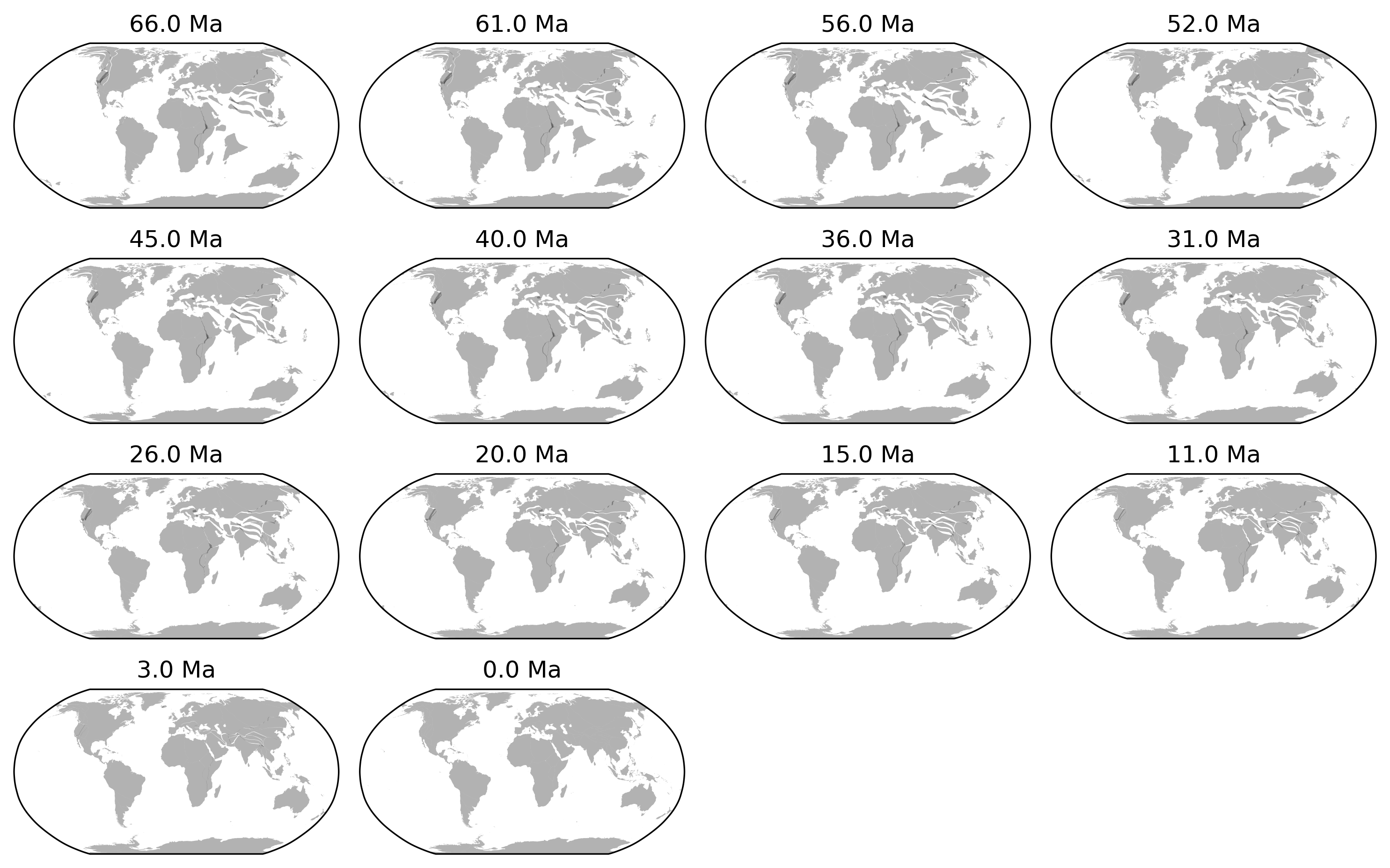An overview of the Cenozoic climate
Cenozoic climate evolution
What is climate? Climate is the general weather over a long period (> 30 years). This can include temperature, humidity, pressure, wind, precipitation, and any other weather condition. In a broader term, it includes the state of several components: including the atmosphere, hydrosphere, cryosphere, lithosphere and biosphere.
Cenozoic climate is characterised by it cooling trend. Westerhold et al. 2020 divided it into
- hothouse
- warmhouse
- coolhouse
- icehouse
Before icehouse, obliquity-related cycles are sparse (the lack of high-latitude ice sheet) and the eccentricity-related cycles dominate, indicating a strong influence of low-latitude processes (heat and moisture transport) on climate variations. Before icehouse, the climate is more deterministic, particularly in the $\delta^{18}$O compared to $\delta^{13}$C, likely because of less nonlinear feedback related to ice sheet.
Paleocene (66-56 Ma)
Paleocene is charaterised by the highest carbon isotope values in the whole Cenozoic. The transition between Paleocene and Eocene is the PETM event famous for its geologically rapid and extreme warming.
Eocene (56-34 Ma)
Following the PETM, Eocene (particularly early Eocene) is a generally warm period with flat pole-to-equator thermal gradient.
Oligocene (34-23 Ma)
since the EOT, antarctic ice sheet gradually appeared. The opening of drake passage (~33 Ma) allows the appearance of ACC that blocks the heat transport; The Antarctic glaciation also initialised Antarctic Bottom Water (AABW) due to brine injection.
Miocene (23-5.3 Ma)
Steinthorsdottir et al. 2020 has a good review of Miocene climate.
- Middle Miocene Climatic Optimum (MMCO): another relatively warm period before the cooling of MMCT.
- Middle Miocene Climatic Transition (MMCT): growth of the East Antarctic Ice Sheet
Pliocene (5.3-2.6 Ma)
McClymont et al. 2023 has a good review on INHG.
- The closure of the Central American Seaway (2.95–2.82 Ma) contributes to the moisture for the Northern Hemisphere Glaciation (2.6-2.7Ma)
Pleistocene (2.6 Ma-0.01 Ma)
Intensification of Northern Hemisphere Glaciation (INHG, 2.6-2.7 Ma). NH differs from SH in its greater cover of land than ocean. This means that the NHG can accelerate the cooling of climate.
Mid Pleistocene Transition (MPT, 1.2–0.7 Ma): climatic cycle changes rhythm from 41-kyr to 100 kyr-dominated.
Evolution of paleogeography

| |